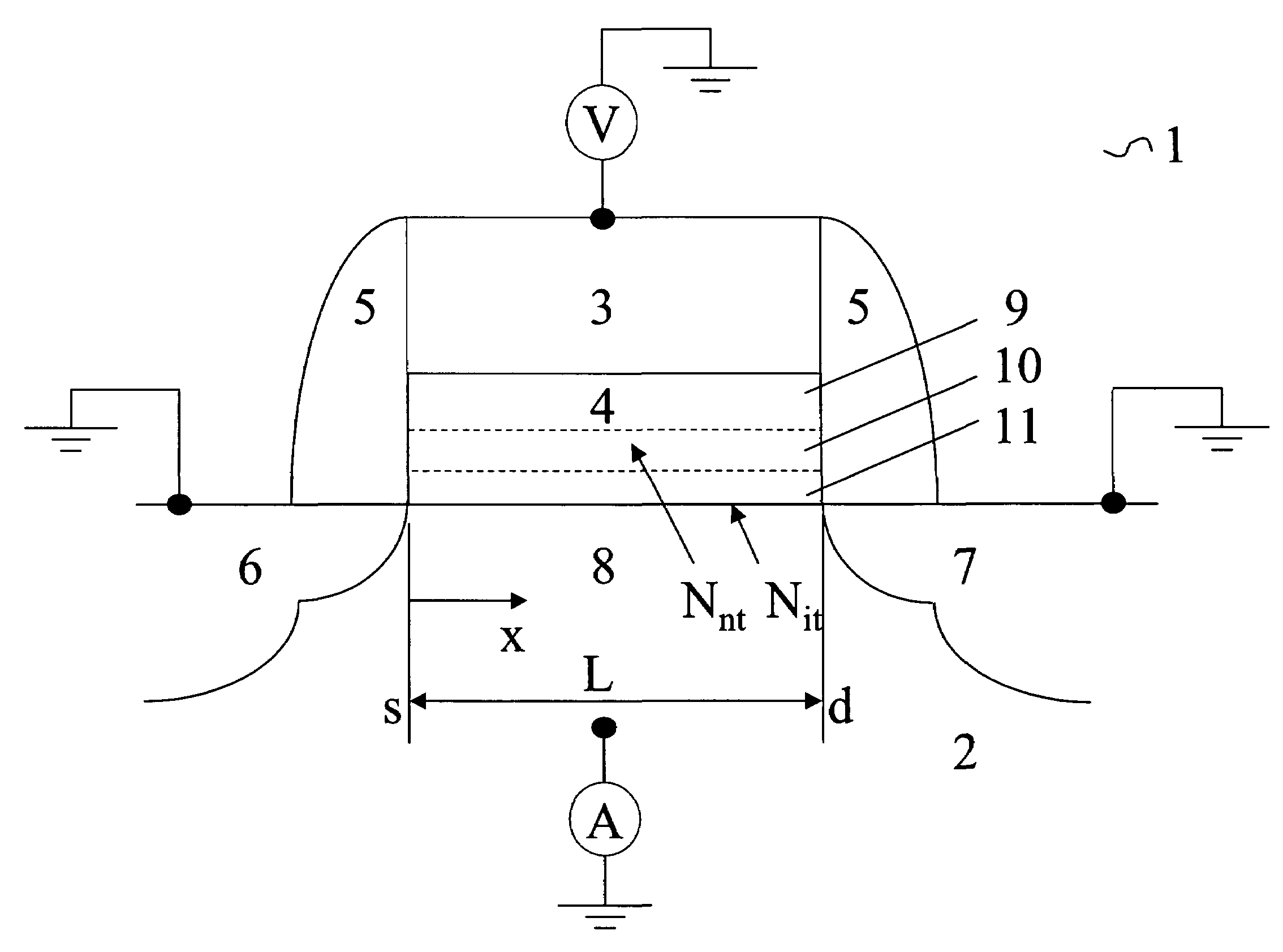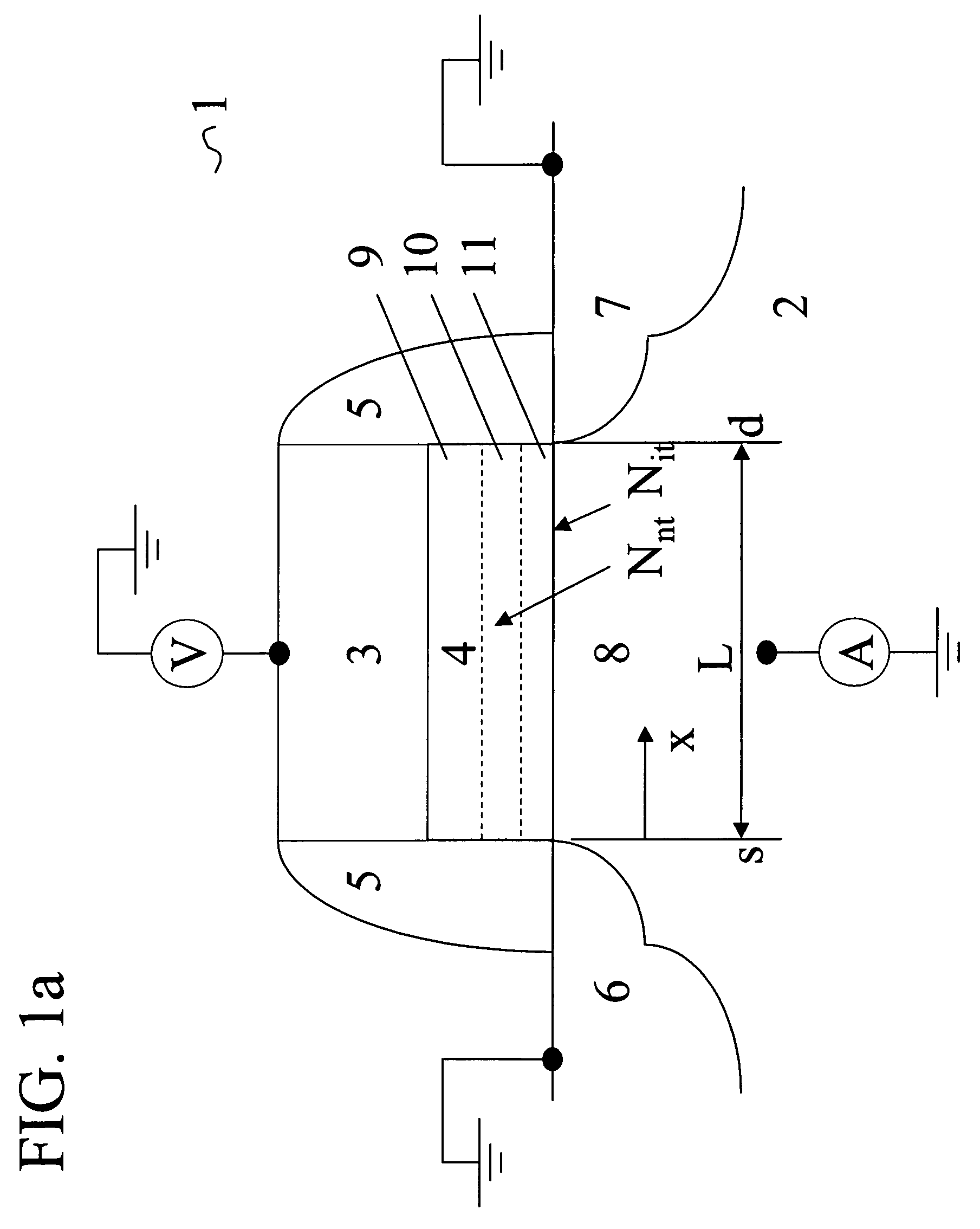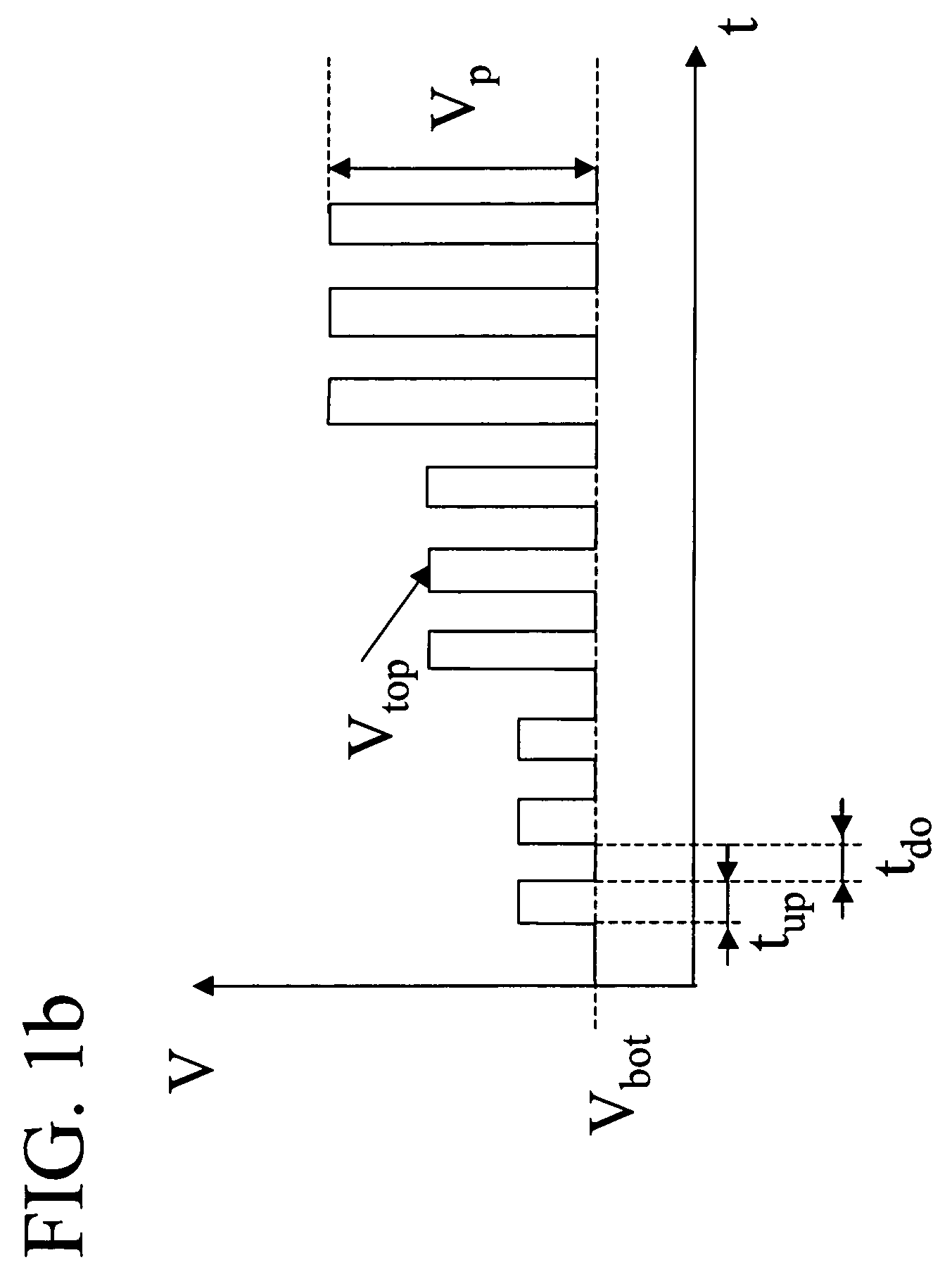Method for extracting the distribution of charge stored in a semiconductor device
a semiconductor device and distribution method technology, applied in the field of semiconductor processing and devices, can solve the problems of repetitive programming and erasure of cells, poor endurance, poor retention after cycling, etc., and achieve the effect of improving choice and accurate and efficient methods
- Summary
- Abstract
- Description
- Claims
- Application Information
AI Technical Summary
Benefits of technology
Problems solved by technology
Method used
Image
Examples
Embodiment Construction
[0025]FIG. 1 shows a schematic cross-section of a MOSFET-type device. This device (1) comprises a gate electrode (3) separated from the substrate (2) by a gate dielectric (4). Typically the gate electrode is formed from a semiconductor material such as polycrystalline silicon doped to obtain the desired workfunction and / or conductivity. This semiconductor material can be partially or fully silicided as known in the art or even metals, e.g. Al, TiN, TaN, are used. The gate dielectric (8) comprises a dielectric charge-trapping layer (10) such as silicon-nitride, silicon-rich oxide, silicon-oxynitride, an oxide layer comprising nanocrystals of a semiconductor material, e.g. polycrystalline silicon. Optionally this charge-trapping layer can be separated from the substrate (2) by another dielectric layer (11) with low or no trapping capabilities, e.g. silicon-oxide. Another layer (9) in a similar material as layer (11) can be used to separate the charge-trapping layer (10) from the gate ...
PUM
 Login to View More
Login to View More Abstract
Description
Claims
Application Information
 Login to View More
Login to View More - R&D
- Intellectual Property
- Life Sciences
- Materials
- Tech Scout
- Unparalleled Data Quality
- Higher Quality Content
- 60% Fewer Hallucinations
Browse by: Latest US Patents, China's latest patents, Technical Efficacy Thesaurus, Application Domain, Technology Topic, Popular Technical Reports.
© 2025 PatSnap. All rights reserved.Legal|Privacy policy|Modern Slavery Act Transparency Statement|Sitemap|About US| Contact US: help@patsnap.com



